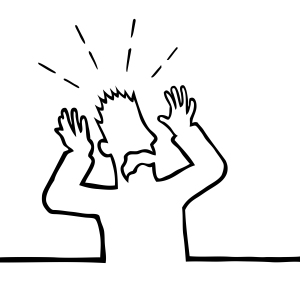One part of preparing written communications that often gets overlooked and under-loved is the proofreading. When you’ve spent a ridiculous amount of hours writing and editing a document, sitting down to do one final, thorough proofread is probably about as appealing as a commute on the Jubilee line at 8am. With a hangover. In the middle of summer. Especially when you are itching to get started on your next exciting copywriting project. But no matter how painful it may seem to do, I can’t stress enough how important it is to proofread your work properly. The last thing you want is those hours of work wasted because some simple typos and grammatical errors switched off your intended audience. On that basis, here are our simple tips to follow to make sure your proofread is always as thorough as it needs to be.
1. Find someone else to do it.
Now, this isn’t because we don’t love proofreading and want to palm it off on someone else, but it really does help to have a fresh set of eyes look over your document. When you’ve spent hours immersed in a project, it can sometimes be hard to be objective about your own copy and you can become blind to certain errors. However, if you don’t have the luxury of having someone else review your work, it’s best to leave enough time between finishing the document and proofreading it (overnight is usually sufficient), to make sure that you’re suitably refreshed to spot any corrections.
2. Print it out.
Reading a printed document is much easier than reading it on your computer screen. And you’ll pick up more mistakes by proofreading a hard copy. It also helps to have a ruler to hand, to help guide your eye line-by-line through the document, and to avoid the temptation to skim read the more boring paragraphs.
3. Remove all distractions.
The last thing you need when you are proofreading is to hear your phone ringing, or your computer ‘ping’ as a new emails comes into your inbox. Instead, take your print out to a quiet, comfortable place where you can be free from all distractions and focus just on your document.
4. Don’t overdo it.
Only you know how long you can proofread a document for before losing concentration (my short attention span only allows me an hour at a time), so set a timer to the time that suits you and if it goes off before you have finished, take a break and come back to it.
5. Perfect your proofreading technique.
Most of us are pretty fast readers. I can be a very impatient reader at times, skimming over words and sometimes full sentences if I’m particularly interested in the copy and eager to read on. Instead, when we’re proofreading we need to adapt our reading technique and take it slow. Word. By. Word. Including any labelling of charts of diagrams.
6. Become a master of grammar.
Unless you know when an apostrophe is required, and where it should be placed, you’re unlikely to make a good proofreader. Swot up on the basics to make sure you’re proficient enough to spot those niggling mistakes. There are some great resources online to test your grammar and punctuation skills (such as grammarbook.com or plainenglish.co.uk).
7. Refer back to your copy style guide.
As mentioned in one of my previous blogs, it’s important for any piece of copy to remain consistent with a clearly documented style guide. Have a quick read through this (or have a printed copy to hand) before sitting down to any proofreading task, to make sure you spot any deviations from the agreed style so that you can correct them. For example, are all your bullet points and headers in the correct case? And are those bullet points aligned correctly?
Hopefully you’ll agree with these useful tips – please feel free to share your own thoughts on what works for you when proofreading documents!


